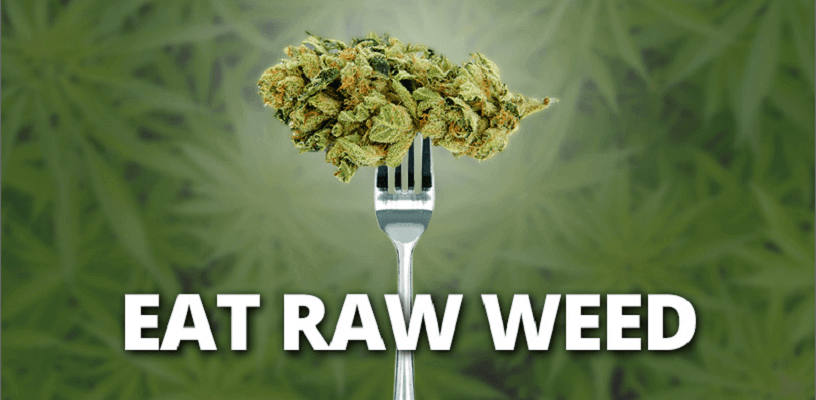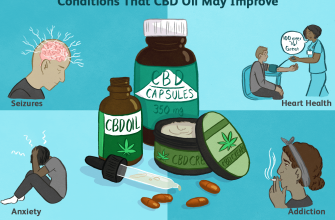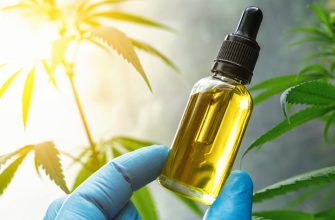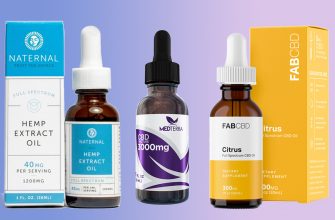- 6 reasons to eat marijuana instead of smoking it
- 1. Eaten marijuana works differently.
- 2. The effect of eaten marijuana lasts longer
- 3. Eaten marijuana does not cause depression and weakness
- 4. Eaten marijuana affects the whole body
- 5. Eating marijuana prevents damage to the larynx and mouth
- 6. Eating marijuana uses valuable waste
- How to Eat Marijuana Safely
In the article on the use of marijuana instead of morning coffee we have presented many arguments provided by progressive scientific institutions from around the world about the benefits of using not only medical cannabis, but also recreational.
Scientists explain why smoking is not the most profitable way.
6 reasons to eat marijuana instead of smoking it
1. Eaten marijuana works differently.
Smoking marijuana and eating marijuana affect the body and mind in different ways. When you smoke marijuana, your body converts the non-psychoactive THC, the main psychotropic component of marijuana, into delta-9 THC. It is this form of THC that causes the very qualities that smokers are famous for – heavy eyelids, apathy and relaxation, giggling, gluttony.
Eating marijuana has a different effect, as the body is actually converting the non-psychoactive form of THC not into delta-9 THC, but into delta-11 THC. This, in turn, has a different effect on the mind and body of a person: its effects are more pleasant than the effect of smoking marijuana cigarettes.
2. The effect of eaten marijuana lasts longer
If you want the effect of marijuana to last longer but be milder, eating it is again better than smoking it. The fact is that when smoking marijuana, THC is “delivered” to the central nervous system through the lungs, and the effect occurs very quickly. After smoking marijuana, you may feel the effect within one or two minutes. This effect usually lasts for about one or two, maximum three hours, after which the positive euphoric sensations end and fatigue sets in.
If you eat marijuana, everything will be different. A person who has eaten or drunk marijuana may find that the effect does not occur within an hour or even three. This parameter is influenced by many factors, in particular, whether a person ate THC on an empty or full stomach. Although the effects take longer, ingested marijuana affects your body and mind for up to seven hours. The result lasts longer, and the effect is less pronounced, more calm, and there is simply no desire to fall on the nearest sofa with a pack of chips or cookies. People who use marijuana to relieve symptoms of anxiety, depression, or pain may find the effects of ingested marijuana more appropriate than those of smoking.
3. Eaten marijuana does not cause depression and weakness
Many people experience a “post-euphoric brokenness” effect that occurs when the effects of marijuana wear off. This effect comes after smoking, and it is enough for a person to refuse further use of cannabis, even if it is prescribed to this person by a doctor.
You may feel tired, burned out, and gloomy. This, in fact, means that the rest of the day can be deleted from life. In this case, marijuana eaten affects through different pathways of the nervous system and acts more slowly, and you are less prone to the devastating weakness that comes when the psychedelic effect wears off. This may mean that edible marijuana can be consumed in the morning or during the day without fear that the rest of the day will not be terrible.
4. Eaten marijuana affects the whole body
So, smoking marijuana delivers THC to the body through the lungs. This is the fastest way to achieve psychedelic effects, while ingested marijuana “spreads evenly throughout the body” and takes longer and slower to act. According to experts, eating or drinking marijuana, however, is much more powerful than smoking can help relieve pain throughout the body and relax it. This is due to the special effect of THC and other cannabinoids, which are more evenly distributed throughout the body and affect the brain. While smoking marijuana primarily affects the brain, eating marijuana affects the entire body, including the brain, and may appear to be a more holistic solution to body and mind problems.
5. Eating marijuana prevents damage to the larynx and mouth
Many people are unaware that marijuana smoking often leads to the same problems as tobacco use (despite the fact that it does not contain nicotine). Smoking marijuana may be the cause of reduced salivation, due to the special effect of smoking on the nervous system, the consequence of which is xerostomia (dry mouth). This condition is the result of a chronic lack of saliva in the mouth. As a result, a smoker can get bad breath, stomatitis and damaged teeth. Lack of saliva also increases the risk of periodontitis. This is because bacteria grow uncontrollably in the mouth, which is not bathed in saliva.
And while THC and other active ingredients in marijuana have been shown in a number of scientific studies to help a person fight cancer, smoking marijuana can have the exact opposite effect: affect health in the same way as smoking tobacco. Some studies (for example, the work of Dr. Tashkin from the Department of Pulmonology and Critical Care at the Los Angeles School of Medicine “Smoking marijuana as a cause of diseases of the larynx”) show that there is a high risk of upper respiratory diseases associated with regular marijuana smoking. Obviously, it’s too early to say anything for sure right now: more research is needed in this area – describing both the negative and positive effects of cannabis smoking. However, there is already some information that needs to be kept in mind. It can also already be said that eating marijuana is probably safer than smoking marijuana.
6. Eating marijuana uses valuable waste
All die-hard marijuana smokers can think about how much valuable material goes to waste. Unsmoked marijuana makes excellent baked goods and drinks that use not only leaves and trimmings, but also buds (not pretty enough to be sold for smoking). Otherwise, it’s all wasted. Instead of throwing away everything that is “out of the box” and not suitable for smoking, you can bake wonderful cookies or chocolate brownies.

Once in a country or state where marijuana is justified and legalized (Holland, Portugal, Canada, California …) it is still worth adhering to safety rules.
How to Eat Marijuana Safely
Before you start eating marijuana in handfuls, think about this: eating marijuana is absolutely not the same as smoking it, because the effect of eating marijuana will be different and will come much later. Smoked marijuana acts immediately. But eaten marijuana will affect your body and mind within three hours (we already wrote about this above). And to get the most out of it, you should use an empirical scientific approach. Here are some tips on how to safely, enjoy and benefit from marijuana:
Tip 1: Determine your quantity
The best way to figure out how much edible marijuana is right for you is to buy the most common, not overpowering weed (called “over-the-counter industrial marijuana” in American articles) and measure it. The effect of such marijuana should be noticeable, but not excessive (and the dealer should be reliable and proven). When experimenting with this product (for example, making cookies), note how much marijuana is contained in one cookie, how many cookies you need to eat for the desired effect to occur, and find the optimal amount.
Tip 2: Don’t “chase”!
Many people make the same mistake: they eat a cookie or brownie with marijuana, wait for the effect, not wait, and eat another one, two, all the rest. When the effect of THC comes, it is not at all as expected, and not even always pleasant. It is better to wait (at least!) a couple of hours before eating at least one more cookie. By fully following the effect from beginning to end, you will be able to understand how many cookies you need next time to achieve the desired effect.
Tip 3: Dissolve marijuana in oil
The best way to make marijuana not only edible and effective, but also tasty, is to heat some butter or vegetable oil in a pot and put the marijuana in it. You need to let them mix over low heat, without bringing the mixture to a boil, so that the THC-containing oils come out into butter (or vegetable) oil. If you bake with this oil, the THC effect will be as uniform as possible, and there is no risk that one marijuana cake will “get” more and the other less.





